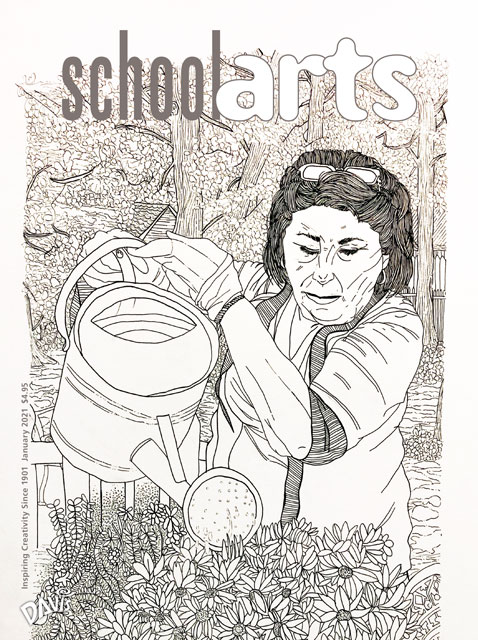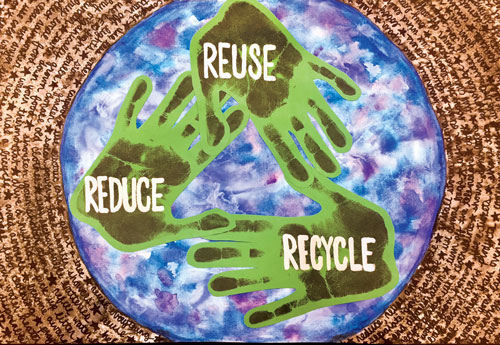 |
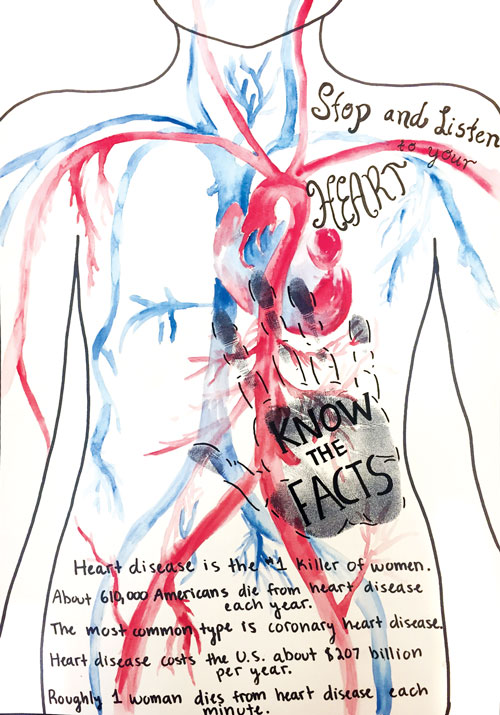 |
| Top: Carolyn. Bottom: Ragan. |
Students can be inspired to create strong images that will bring about greater awareness as well as offer personal support to a cause they feel strongly about. One example you might share with your students for discussion is the image of Pablo Picasso’s Guernica. This painting was created in 1937 and conveys the pain and suffering brought about by Franco, the dictator of Spain during the Spanish Civil War. This powerful image demands the viewer’s attention as it reflects on the senseless destruction and suffering of the people under a Fascist government.
A Visual Problem
Students will create a bold image for a poster that conveys one area of need they see in the world. The goal is to create a powerful visual statement that will increase greater awareness of the subject they feel most passionate about.
The Process
Students begin by asking themselves, “When have I needed something in my life and who offered to help me?” and “What are the needs I see in the world today?”
As a group, begin with a discussion that will encourage a greater awareness of this topic. How can we offer help? Students identify the needs in their lives, their community, the country, and the world. Create a list in your physical or virtual classroom to be viewed and added to each day during this project.
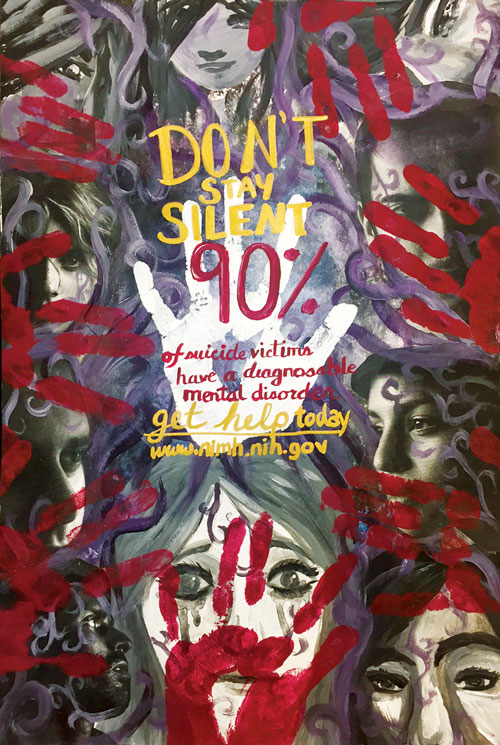 |
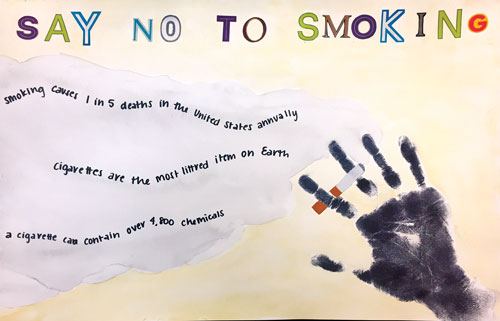 |
| Top: Marie. Bottom: Nicole. |
To personalize students’ work and unify the work of the class, ask them to integrate a print of their hands into their posters. This shares a personalized commitment to increase awareness of their identified need. They can print one hand or both depending on the desired impact. Students also have the choice of working in any media beyond making their handprints.
Student Rubric and Self-Reflection
- Does the created image have visual power and impact? What are the elements of art and principles of design that make that possible in your work?
- Does the poster cause one to stop and really notice what it says and depicts?
- Explain how your handprint has called the viewer to action. What would you ideally like the viewer to do after seeing your poster?
- What do you plan to do now that you’ve made this piece?
Reflections
As art educators, we support the idea of developing projects that increase awareness of important issues in the world today. This work can encourage positive human qualities in our students such as greater understanding, empathy, compassion, and caring.
Ken Vieth is the author of The Visual Experience, From Ordinary to Extraordinary: Art and Design Problem Solving, and Engaging the Adolescent Mind Through Visual Problem Solving, all available from Davis Publications. kcvieth@gmail.com
Julie Bibb is an art teacher at Bishop Watterson High School in Columbus, Ohio.
NATIONAL STANDARD
Connecting: Relate artistic ideas and works with societal, cultural, and historical context to deepen understanding.
RESOURCE
Picasso’s Guernica: pablopicasso.org/guernica.jsp
View this article in the digital edition.
